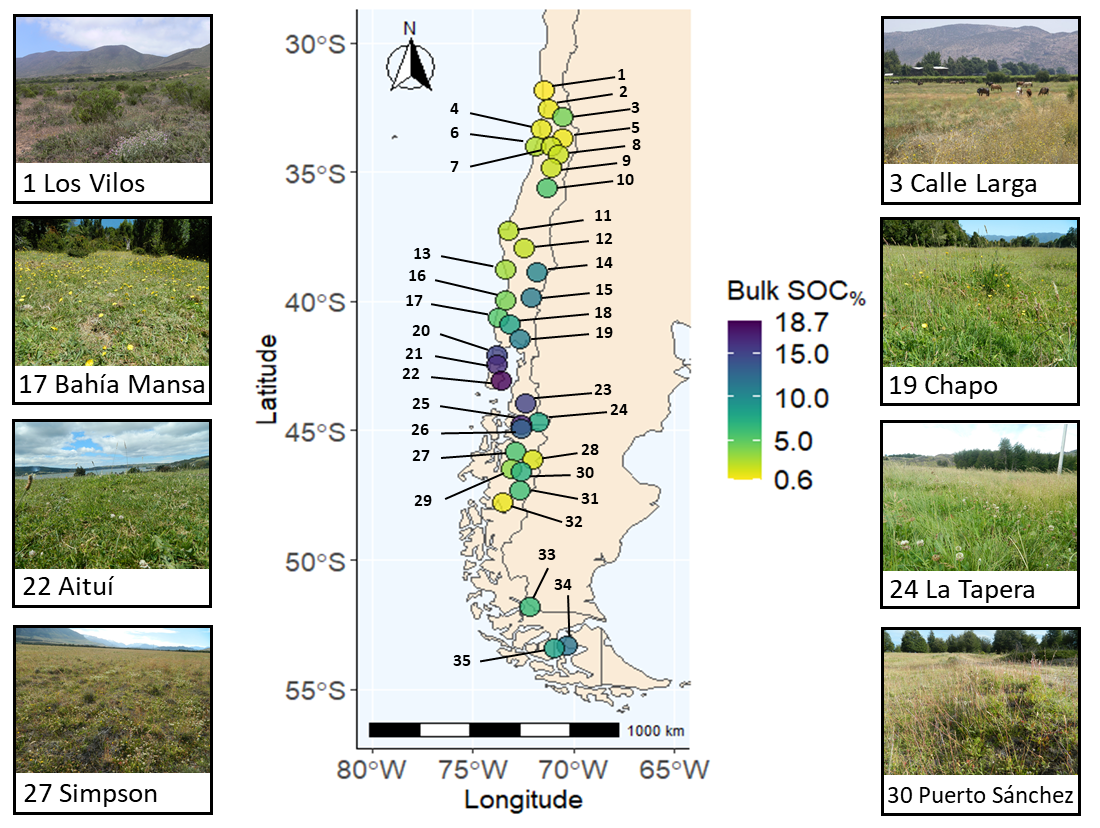Chilean Grassland Gradient
Samples of mineral topsoils from a 2300 km long gradient of Chilean grasslands help us to address questions surrounding the dynamics of soil organic matter (SOM).
The gradient allows to link soil microbial processes and SOM quantity and quality with soil physicochemical properties, which are shaped over long time scales in the course of soil formation. The sampling was designed to maximize climatic and soil physicochemical contrasts, while constraining the analysis to a coherent type of ecosystem. We apply methods to quantify relevant SOM pools, gross and net fluxes, enzymatic activities and soil physicochemical parameters, as well as sequencing based characterization of soil microbial communities. The gradient is very well characterized, and we actively promote collaboration on this data set.
References:
Wasner, D., Abramoff, R., Griepentrog, M., Venegas, E. Z., Boeckx, P., & Doetterl, S. (2024). The role of climate, mineralogy and stable aggregates for soil organic carbon dynamics along a geoclimatic gradient. Global Biogeochemical Cycles, 38, e2023GB007934. external page https://doi.org/10.1029/2023GB007934
Wasner, D., Schnecker, J., Han, X., Sun, Y., Frossard, A., Zagal Venegas, E., Boeckx, P., & Doetterl, S. (2024). Environment and microbiome drive different microbial traits and functions in the macroscale soil organic carbon cycle. Global Change Biology, 30, e17465. external page https://doi.org/10.1111/gcb.17465
Wasner, D. (2024). Mechanisms that link climate, soil properties and microbes to macroscale soil organic carbon dynamics: Insights from a geoclimatic gradient. Doctoral Thesis, ETH Zürich. external page https://doi.org/10.3929/ethz-b-000672416
